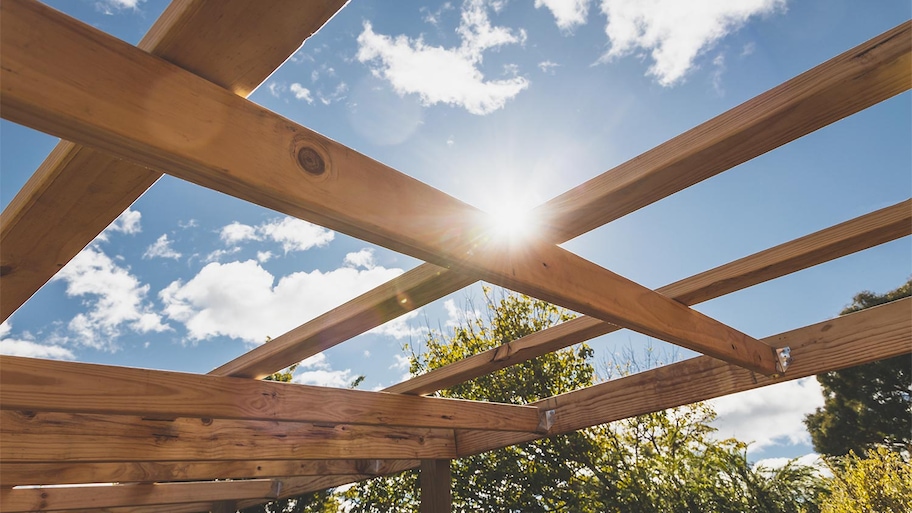If you dream about dining al fresco under a trellis of beautiful climbing plants, you should consider attaching a pergola to your house. Pergolas enhance your outdoor space and provide a great place to entertain or relax. Our guide will show you how to attach a pergola to your house in seven steps.
Prepping to Attach a Pergola to Your House

Before embarking on your attached pergola project, you’ll want to ensure that your space is ready and that you choose strong and long-lasting materials.
Ensure Your Space Is Ready
You’ll want to build your pergola on top of an existing patio, deck, or concrete slab. Before you create your pergola, it’s a good idea to get an inspection from a local deck and porch contractor—this way, you’ll be sure that your deck can withstand the weight of a pergola.
Design Your Dream Pergola
You’ll need to create a set of blueprints with dimensions, components, and costs. If you’re unsure whether your plans comply with local building codes, we recommend hiring a local building contractor to review or create plans for you.
Choose the Right Material
Not only do you want your pergola to look stylish, but you also want to ensure it’s durable and long-lasting. The sturdiest material choices include:
Pressure-treated pine: This is a budget-friendly option that resists rot and mold—and keeps bugs away. Pressure-treated wood requires regular staining and painting to keep mold and fungus at bay.
Cedar: A robust, popular choice that stands up to rot, mold, and pests, cedar also has a beautiful sheen and scent. This wood is prone to fading over time, so you’ll need to reapply a stain every couple of years.
Vinyl: For those seeking a non-wood option, vinyl provides ease of maintenance and durability. Vinyl is sturdy, long-lasting, and resistant to bugs and mold—but it also costs more than traditional wood.
How to Purchase Supplies
Experienced woodworking and homebuilding DIYers should have all the tools they need for this project. And you should have no problem selecting lumber and picking out the right supplies from your local hardware store.
You can also find pergolas in pre-fabricated kits. Many of these kits are custom-made to fit your deck’s dimensions, and best of all, they come with all the materials needed to complete your project (we’re talking pre-cut and pre-notched wood beams). Although, you’re still going to need power tools.
Finally, you can always hire a pergola builder near you—not only will pros come with all the necessary tools, but they will also purchase the supplies. Plus, you can check their references and see examples of their work, so you know you’re in good hands.
Pro tip: Building an attached pergola is a multi-person job. So you’ll need at least two people to complete this project.





